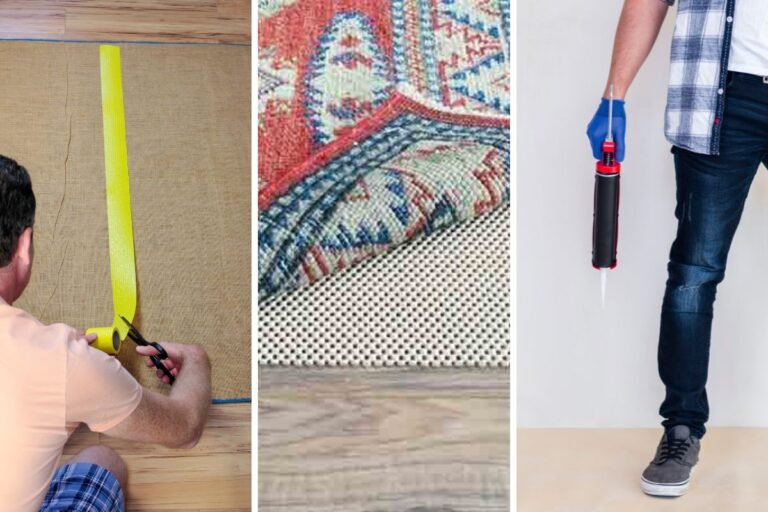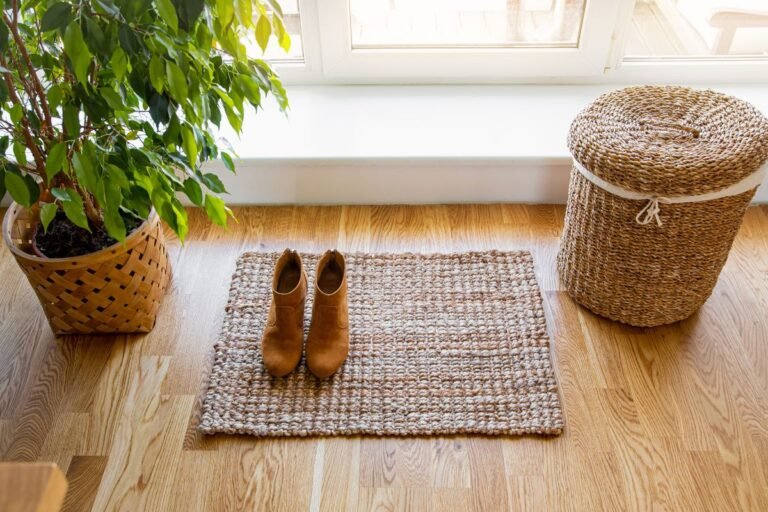Whether you’re looking to declutter your home, protect your rug during a move, or simply want to keep it in good condition while it’s not in use, this step-by-step guide will help you do it right.
We’ll cover everything from cleaning and protecting your rug against pests, to rolling and storing it safely. So let’s get started!
Just remember, a clean rug is a happy rug. 😉
How To Store A Rug: Step-By-Step
Storing a rug properly is a pretty easy task once you’ve got your space and materials sorted. Learn how to store rugs in 5 easy steps!
1. Clean The Rug Thoroughly (And Let Dry)
It is important to clean a rug before putting it into storage because any dirt, dust, or stains on the rug can attract pests or cause the rug to deteriorate while it is in storage. A clean rug is also less likely to accumulate additional dirt or stains while it is being stored.
Plus, a clean rug will be fresher and in better condition when you take it out of storage and use it again. 😉
Here are my general recommendations for cleaning rugs:
- Synthetic Rugs. To clean a synthetic rug, first vacuum it and then, if the rug’s label says that it is machine washable, pop it into the washer on a gentle cycle. If the rug is too large or cannot be machine-washed, hose it down and gently scrub it clean with rug soap.
- Woven Rugs Or Braided Rugs. To clean a braided rug or woven rug, wash it in a washing machine using warm water, a gentle setting, a small amount of detergent, and a teaspoon of white vinegar. If the rug is too large to fit in a washing machine, consider using a laundromat or professional cleaning company. Hang the rug to dry after cleaning.
- Coir, Sisal, Rush And Grass Rugs. To keep your natural fiber rug clean, vacuum it regularly and scrub any stains with a soft brush and soapy water. Dry the rug using a fan or dryer, as water can weaken the fibers. If a section of the rug becomes damaged, you can hand-stitch new squares into it to repair it.
- Handmade Rugs And Hand-Knotted Rugs. Cotton rugs can generally be placed in the washer on a gentle cycle with cold water. If they’re extra delicate then you can spot clean the rug and gently shake out any dirt and debris.
- Antique Rugs And Oriental Rugs. To deep clean your rug, place a nylon screen on top before vacuuming. Spot clean with water and gentle soap, if you’re comfortable with it. If your antique or oriental rug needs deep cleaning, then it’s best to hire a professional rug cleaning company.
- Fur, Sheepskin And Hair-On Hides. To clean your fur or sheepskin rug, sprinkle talcum powder over the surface and leave it for a few hours (or overnight). Shake out the excess powder, repeating the process one or two more times. Alternatively, you can vacuum (carefully!) the rug using a low setting.
Let the rug dry completely before moving onto the next step.
2. Protect The Rug From Pests
Use insect and moth repellent if you’re storing your rolled rug for an extended period of time. Mothballs and cedar chips are natural deterrents that can help protect your rug from pests, such as moths and other insects, while it is in storage. Mothballs are small, white balls that are made of naphthalene, a chemical that gives off a strong, unpleasant smell that pests find unpleasant. Cedar chips, on the other hand, are made from cedar wood, which also has a strong, natural odor that repels pests.
To use mothballs or cedar chips to protect your rug, you can place them directly in the storage container with the rug, or wrap them in a cloth and place them near the rug. This will help to create a barrier that pests will be less likely to cross. It’s important to follow the instructions on the packaging for the specific product you are using, as some mothballs or cedar chips may need to be used in a specific way to be most effective.
3. Roll The Rug (Tightly) For Storage
It is important to roll a rug for storage because it helps to protect the rug from damage and pests. Rolling the rug tightly helps to reduce the amount of space it takes up in storage, which can be especially useful if you have limited storage space.
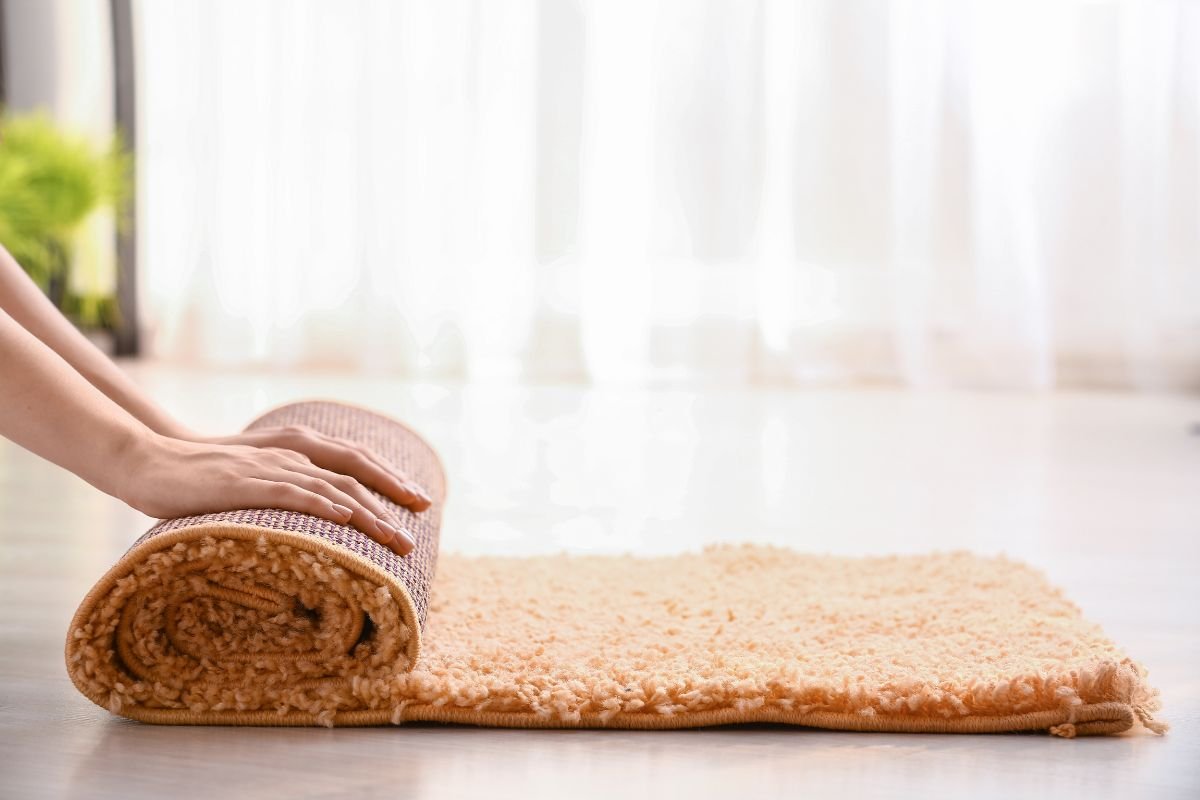
Rolling the rug can also help to prevent creases and wrinkles from forming, which can be difficult to remove once the rug is unrolled.
How To Roll Up A Rug For Storage
- Find a clean, dry space to roll up the rug. It’s important to avoid rolling up the rug on a dirty or damp surface, as this could cause damage or attract pests.
- Roll the rug tightly, starting at one end and working your way to the other. Be sure to roll the rug as tightly as possible, as this will help to reduce the amount of space it takes up in storage.
- Once the rug is fully rolled up, wrap it with brown craft paper. Use a wide, sturdy piece of tape, such as duct tape, to secure the roll. This will help to keep the rug in place and prevent it from unrolling while it is in storage.
- Place the rolled-up rug in a storage container. This will help to protect the rug from pests and other environmental factors while it is in storage.
- Store the container in a dry, cool place, such as a basement or attic. This will help to prevent the rug from becoming damaged or attracting pests while it is in storage.
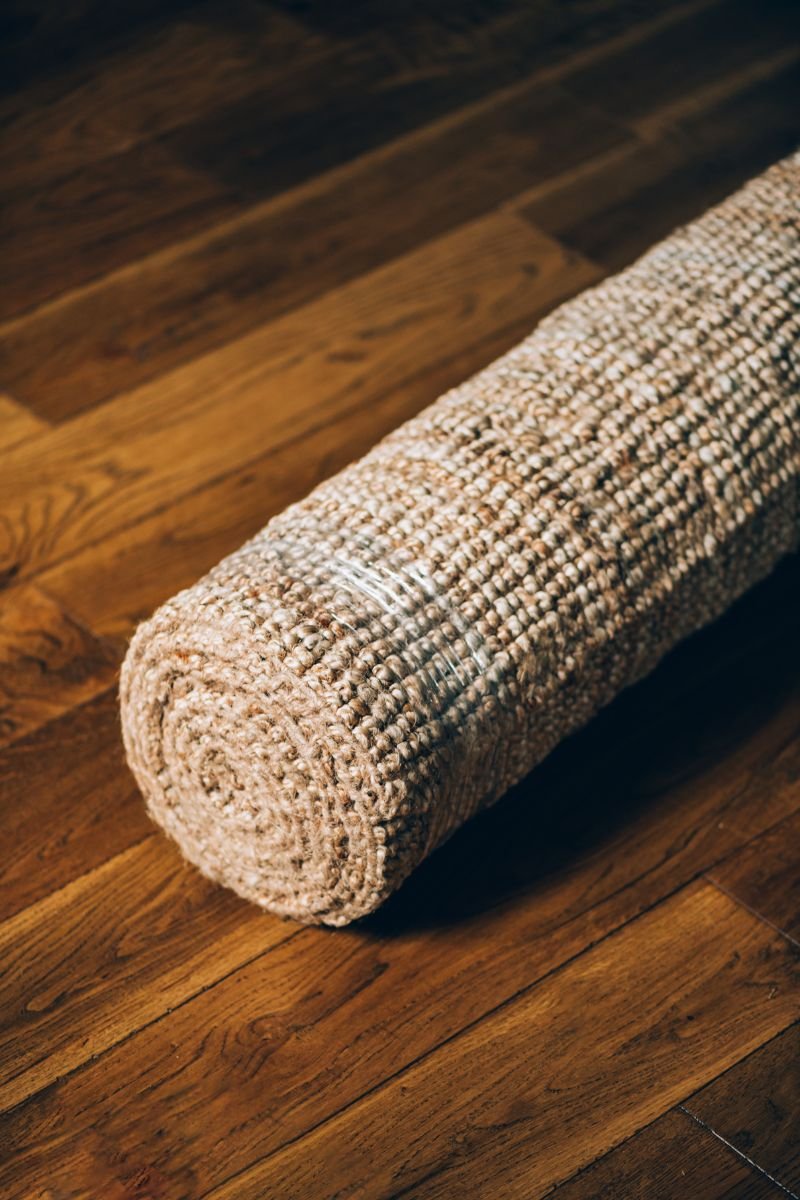
PRO TIP: Securing it with tape can help to prevent it from unrolling while it is in storage, which could cause damage to the rug or make it more vulnerable to pests.
4. Wrap With A Protective Fabric
To protect a rug when transporting or storing, wrap with brown craft paper. You can then store it in a rug storage tube or bag.
Rug Storage Tubes
Rug storage tubes are large, sturdy tubes made of plastic or cardboard that are used to store and transport rugs. They are typically long enough to hold a rolled up rug, and have sturdy ends that can be sealed to protect the contents. Rug storage tubes are useful for protecting rugs from dirt, dust, and other elements while in storage or during transportation. They are also helpful for organizing and storing rugs in a small space, as they take up less room than a rolled up rug.
To determine which size rug storage tube you need, you will need to measure the dimensions of your rug. First, measure the width of the rug at its widest point. Then, measure the length of the rug from end to end, including any fringe.
Next, add a few inches to each measurement to allow for some extra space. This will ensure that the rug fits comfortably inside the storage tube without being too tight.
For example, if your rug measures 5 feet wide and 8 feet long, you will want a storage tube that is at least 5 feet 6 inches wide and 8 feet 6 inches long. This will give you enough room to easily roll up the rug and insert it into the tube, while also providing some extra space for protection.
It’s always better to err on the side of caution and get a larger storage tube than you think you need. This will ensure that your rug fits comfortably and is well protected.
Rug Storage Bag
Rug storage bags are protective covers designed to keep your rug clean and safe while it is not in use. They are usually made of a heavy-duty, water-resistant material like polyethylene or polypropylene, and have a zipper closure to keep out dust and pests.
To determine the correct size of rug storage bag, measure the length, width, and height of your rug, and look for a storage bag that is slightly larger than these dimensions. This will ensure that your rug fits securely in the bag and has enough room to breathe.
5. Store The Rug In A Cool, Dry Environment
The best way to store rugs is to keep them in a clean, dry, and climate-controlled environment, away from direct sunlight and heat sources. Rugs should be stored vertically, either rolled or standing upright, rather than laid flat, as this helps prevent creases and uneven wear. It is also a good idea to use a rug storage bag or wrap to keep the rug clean and protected.
If you are storing the rug in a garage or basement, be sure to elevate it off the ground using wooden blocks or pallets to avoid moisture damage. Finally, be sure to check on your rugs regularly and give them a thorough cleaning and inspection before using them again.
Rug Storage Tips
- Unroll and check the rug for signs of damage every few months.
- Keep the air circulating in your home by using a fan or dehumidifier to prevent the growth of mildew.
- To protect your rugs from fading, keep them out of direct sunlight by using shades or blinds to block light from windows.
- Create a regular housekeeping plan that includes vacuuming and dusting to keep your rugs clean and free of dirt and debris.
- To prevent pests like carpet beetles from nesting in your rugs, store them on an elevated surface like wooden blocks or pallets. This will also help protect against moisture damage.
- If you can swing it, store your rug vertically in a climate controlled storage unit if storing for an extended period of time.
Closing Thoughts
Congratulations on completing the steps for storing your rug! Whether you have a synthetic, natural fiber, handmade, or fur rug, it’s important to follow these guidelines to ensure that your rug stays clean and protected while in storage. A little bit of extra care and attention can go a long way in preserving the quality and longevity of your rug. Happy storage!
More Rug Care Tips
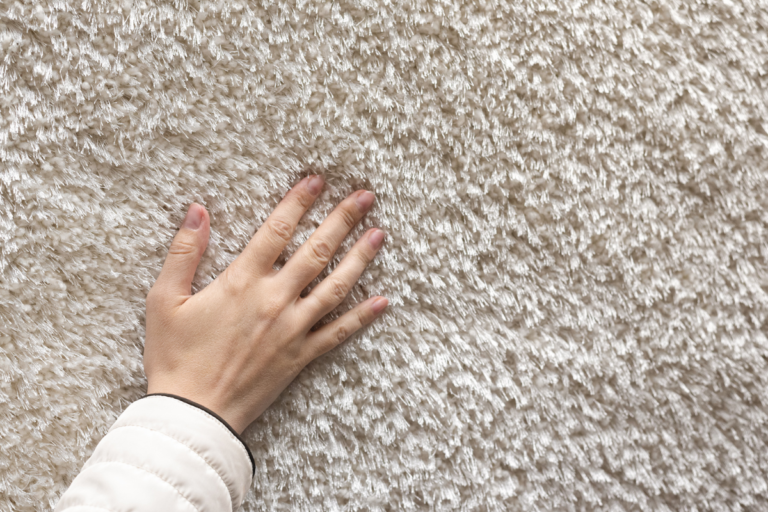
How To Protect Carpet from Furniture: A Comprehensive Guide
Got funky dents in your carpet? Here’s how to protect carpet from furniture.

Here’s the best robot vacuum for thick carpet
Here’s the best robot vacuum for thick carpet that is low maintenance, durable, and long-lasting.

Can Roomba go over rugs? Some of them.
Can Roomba go over rugs? Some of them. Here’s how to know if you can use Roomba in your home.
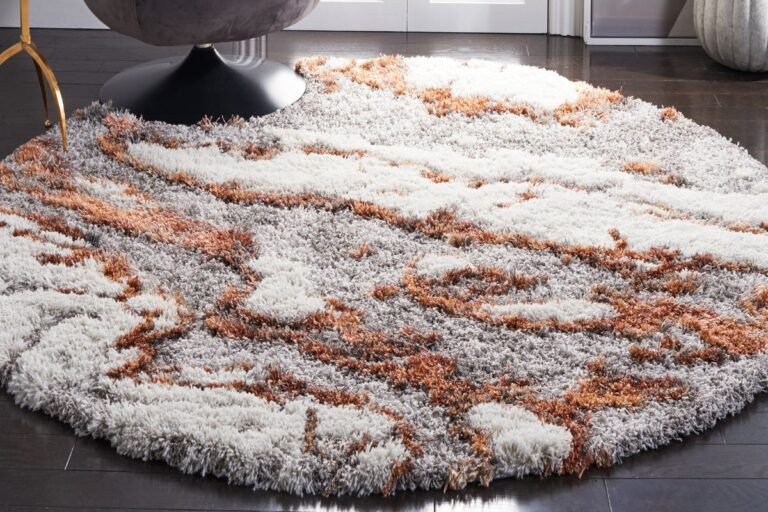
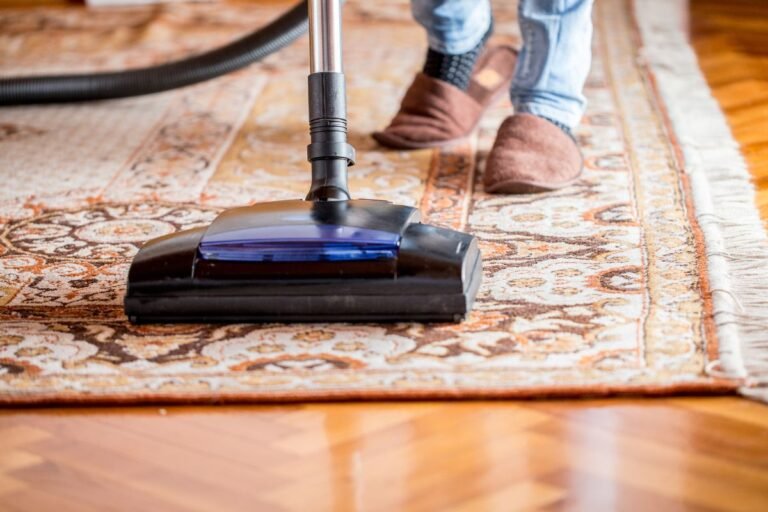
Can You Use A Carpet Cleaner On A Rug? It Depends.
Can you use a carpet cleaner on a rug? Learn which area rugs you can use a shampooer on and which are best for soapy water instead.
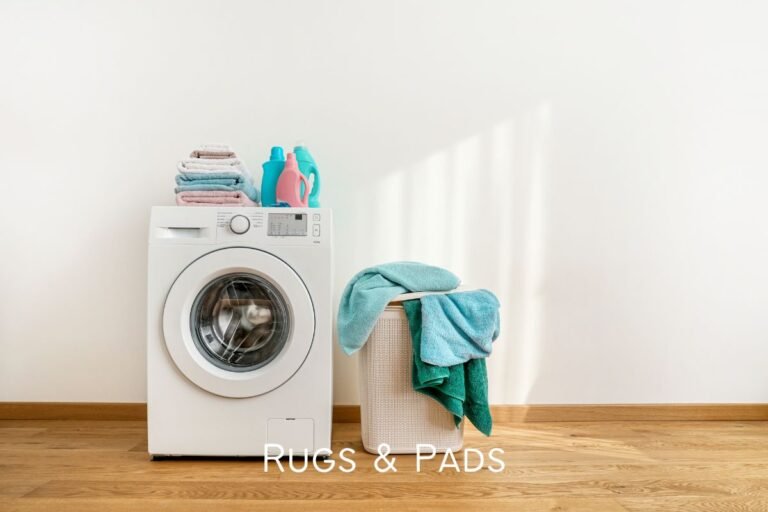
Can You Put Rugs In The Washer? Yup, Here’s How.
If you’re wondering if you can put rugs in the washer, the answer is ‘maybe’. It depends on the rug material and stains. Here’s what to do with your rug.



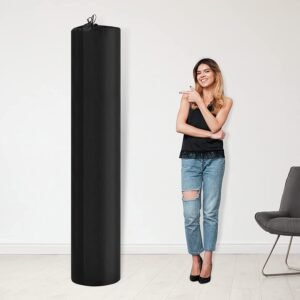
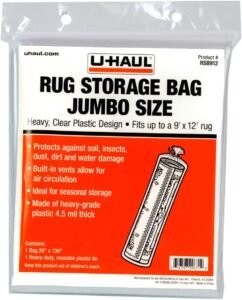

![[SOLVED] Best vacuum for area rugs in 2023](https://rugsandpads.com/wp-content/uploads/2023/02/best-vacuum-for-area-rugs-768x512.jpg)

